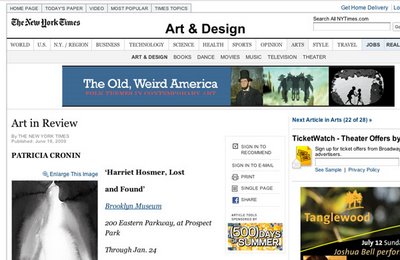Michael Jackson, Farrah Fawcett tribute
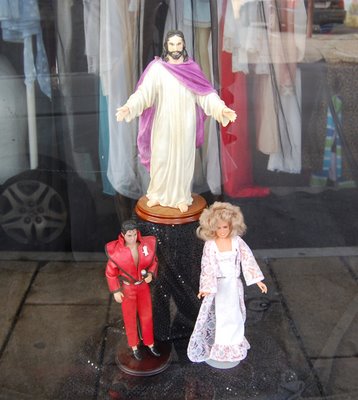
Tribute to Michael Jackson and Farrah Fawcett in the window of Richard Leonard's Bananas Vintage Clothing store in Gloucester, Massachusetts.

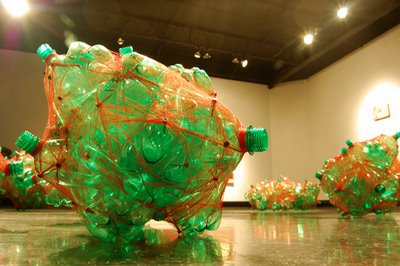
It seems like a simple exercise you might give students: Get a bunch of plastic bottles, lots of thread, and make some art from it. It's the kind of assignment teachers give to get students thinking about sculptural form and structure. And usually the results feel like a dumb exercise.Read the rest here.
But in "Summer Adjunct Faculty Exhibition: Two Sculptors and a Painter" at Rhode Island College's Bannister Gallery, Jamey Morrill of Providence makes it work. His sculpture Larvae features green plastic bottles screwed together and then bound by webs of red thread to form recycled-junk crystals set right on the gallery floor. Gallery director James Montford places a mat on the ground to encourage you to get down at their level and study their forms.
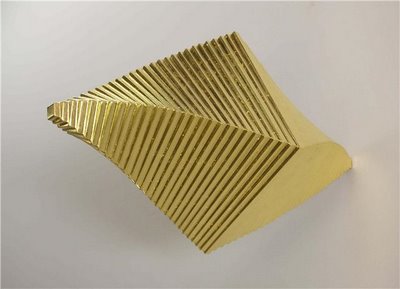
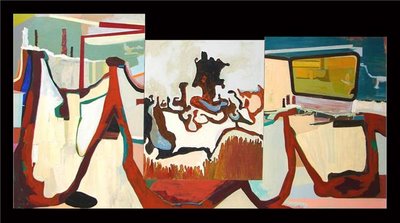
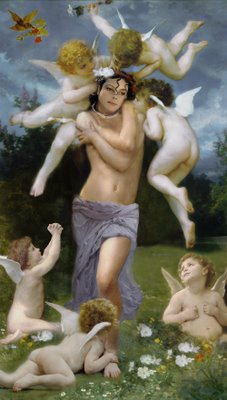
I just saw this article, which makes me think that this Dana Schutz piece is happening right now.We invite you to use the comments to post tributes to Jackson.
I've always wondered how Michael Jackson would have been regarded if he had died in 1993 or how Bob Dylan's iconography would be treated if he'd died in 1966. I was too young to be aware of Elvis' death or John Lennon's but in the midst of Michael Jackson's untimely death, I appreciate the focus on his phenomenal cultural contributions as opposed to the gruesome drama of his tragic decline. I'm living in Asia now and all the news reports regard him with a familiarity I didn't quite expect.
Of course, another weird thing is how my work about him has suddenly taken a whole new meaning.

Ringo Starr was the best artist in the Beatles. And, I believe, the best artist to appear on “Shining Time Station” too. (Sorry, George Carlin.) It feels really weird to say, but it's the undisputable conclusion I drew from seeing "Ringo Starr — Artist" at Chabot Fine Art Gallery. The exhibit presents prints by the former Beatles drummer as well as Paul McCartney, John Lennon, and . . . Al Hirschfeld, the celebrated caricaturist apparently filling in as the fifth Beatle.Read the rest here.
Starr's prints here are best described as goofball digital doodles. Most of them are fish-lipped faces, like the red one with green lips and blue googly eyes printed on a drum head. They're drawn with heavy black outlines and filled in with bright artificial computer colors. "I started in the late '90s with my computer art," Starr has said. "While I was touring it gave me something to do in all those crazy hotels you have to stay in on the road." They look it.

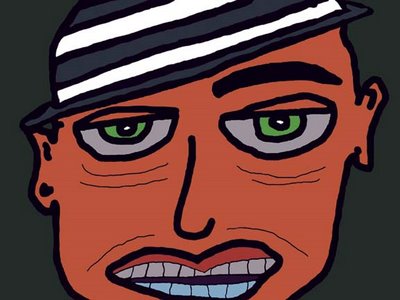
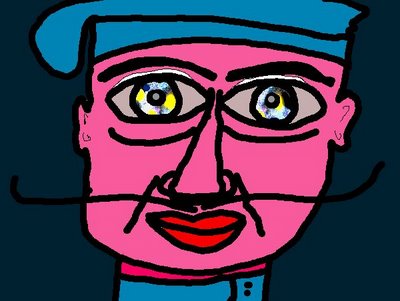
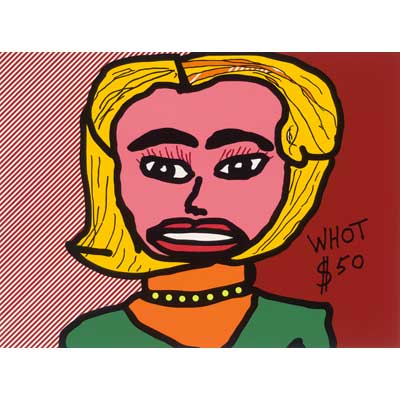
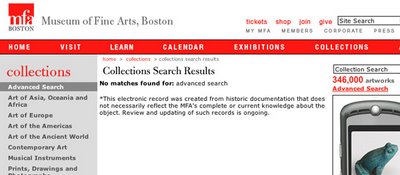
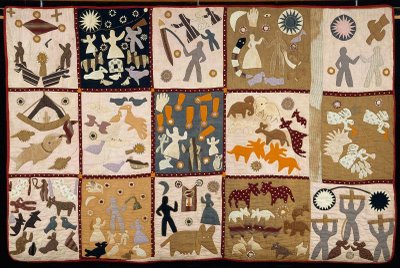

Quinn Taylor of Providence makes philosophical wisecracks about the nature of art in "1979-2009" at Stairwell Gallery. The art includes black-and-white paintings of classical sculpture; bucolic landscapes seemingly blotted out by large lopsided rectangles; shiny silver paint covering cockeyed quadrilateral canvases that look like glam Ellsworth Kelly covers; and paint slathered Abstract Expressionist-style on top of what seems like images of Earth from space. In the middle of the gallery is a sculpture of giant Groucho Marx-like nose and glasses titled “In My Absence.” They're all shot through with a dry, smart wit that tries to make you think but doesn't necessarily make you laugh.Read the rest here.
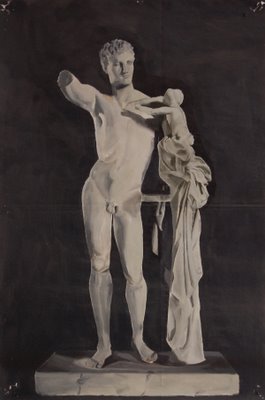
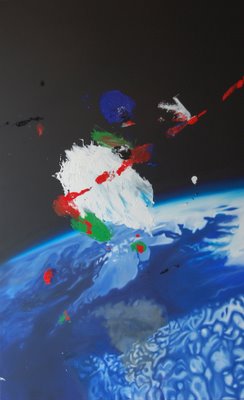
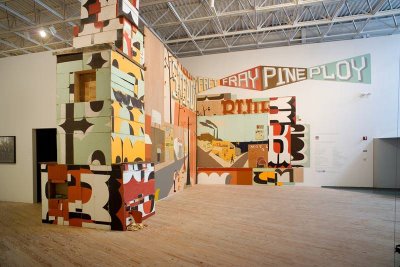
In the beginning, there was the Old West. The legend of the Old West's cowboys and Indians, flinty pioneers and buffalo killers, sheriffs and gunslingers started with the tall tales that cowboys themselves told of their glorious exploits. Then reporters did some more embellishing. And Buffalo Bill Cody, who had been awarded the Congressional Medal of Honor for his fighting during our Indian Wars, started a circus in which he hired real Native Americans to re-enact with him the battles on stage. Which in turn inspired Hollywood Westerns.Read the rest here.
That sort of based-on-a-true-story version of our history, in which fact gets thrillingly mixed up with fiction and turns into national myth, is the focus of the DeCordova Sculpture Park + Museum exhibit "The Old, Weird America: Folk Themes in Contemporary Art," which was organized by Toby Kamps for Contemporary Arts Museum Houston.
The title is borrowed from Greil Marcus's 1997 book about Bob Dylan's “Basement Tapes,” an album that came out of Dylan's noodling around with traditional and original songs in 1967 while he was holed up in upstate New York recovering from a motorcycle crash. In the songs, Marcus wrote, "certain bedrock strains of American cultural language were retrieved and reinvented" as Dylan channeled the rough-and-tumble outlaw America of old folk songs, murder ballads, tramp ditties, and blues.
"Old, Weird America" assembles 18 artists who mine this vein of American history/legend, who play at being old-timey. It's a ripe subject, and it maps what may be a generational trend — most of the artists here were born in the early '70s.
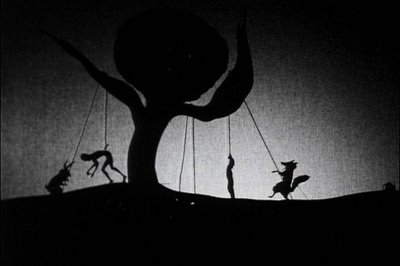
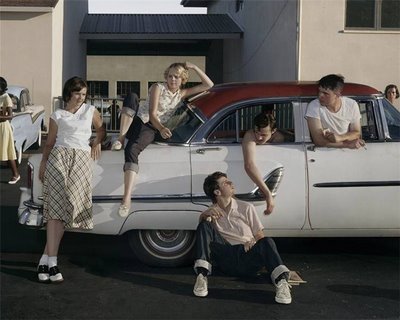
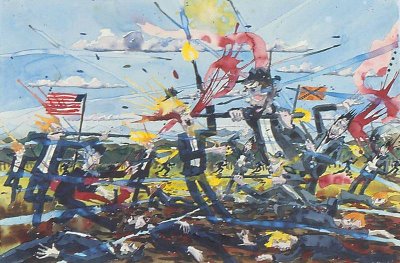

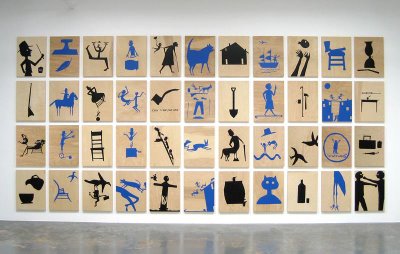

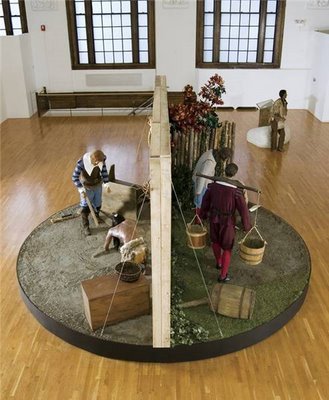

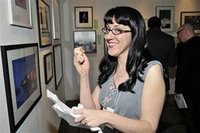 Leslie K. Brown, the standout curator at the Photographic Resource Center at Boston University, will be leaving her post later this summer to pursue a doctoral degree in art history, with a specialty in photography, at Boston University.
Leslie K. Brown, the standout curator at the Photographic Resource Center at Boston University, will be leaving her post later this summer to pursue a doctoral degree in art history, with a specialty in photography, at Boston University.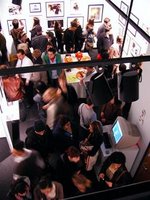 The Photographic Resource Center at Boston University has launched a matching-fund drive to help it ride out our Not-So-Great Depression.
The Photographic Resource Center at Boston University has launched a matching-fund drive to help it ride out our Not-So-Great Depression.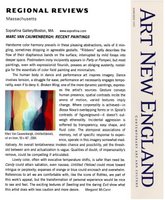 Art New England has been acquired by New Venture Media Group, which has offices in Boston’s Fort Point community and publishes the bi-weekly visitors' magazine Panorama and the Boston edition of Playbill.
Art New England has been acquired by New Venture Media Group, which has offices in Boston’s Fort Point community and publishes the bi-weekly visitors' magazine Panorama and the Boston edition of Playbill.